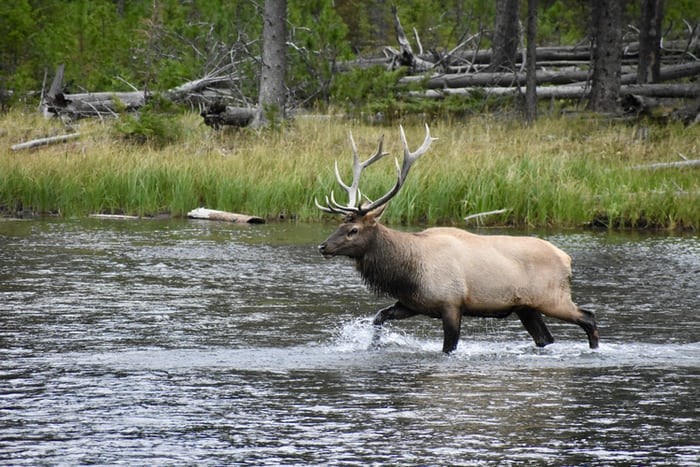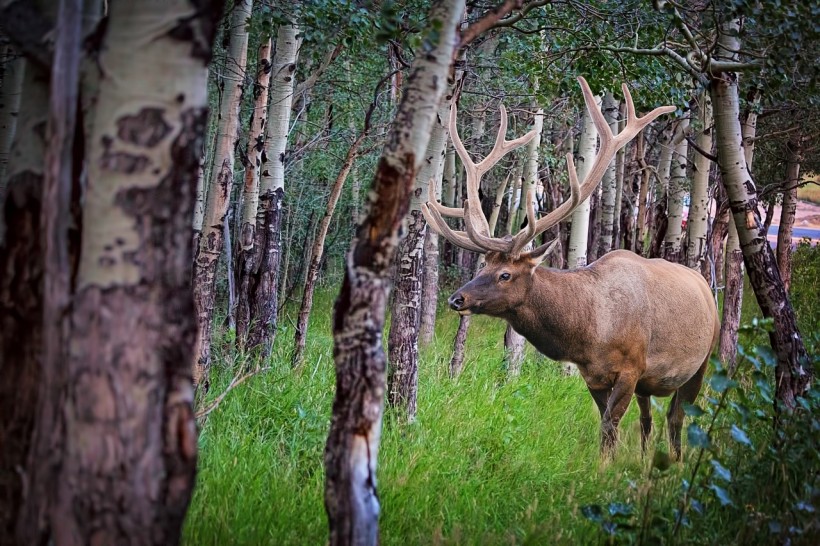Elk feedgrounds in Wyoming are being sued to be removed.

The Wyoming Fish and Game Department operates 22 elk feed grounds in the state, feeding as many as 17,000 elk each winter. Eight of the agency's 22 feedgrounds are on National Forest territory, and six are on BLM land.
Feedgrounds in Wyoming
For decades, the running of feedgrounds has been a source of contention. Many wildlife activists believe that feedlots are a natural vector for the transmission of diseases such as brucellosis and Chronic Wasting Disease, a prion disease related to Mad Cow Disease in cattle.
Feedgrounds are widely supported by the livestock industry because they claim they mitigate elk conflicts on hay fields. Domestic livestock use of public forage on federal lands in the summer decreases wildlife carrying ability in the winter.
Preparing for a Legal Battle
Several conservation groups, including the Gallatin Wildlife Association, Western Watersheds Project, Wyoming Wildlife Advocates, and Wyoming Sierra Club, are suing the Bridger Teton Forest Service, claiming that the program endangers wild ungulate species in the Greater Yellowstone Ecosystem.
The National Elk Refuge, founded in 1912 by Jackson, Wyoming, was the first attempt to feed elk.
Wyoming lawmakers passed laws in 1929 that made the Wyoming Department of Fish and Game financially responsible for elk losses to hay crops. The state determined that creating feedgrounds would reduce elk-cattle conflicts.
Related Article: Only 3% of the World's Ecosystems Still in Pristine Conditions
CWD Infection

The prion Chronic Wasting Disease infects ungulates such as deer and elk. It is characterized by the slow deterioration of the brain, which leads to death. Elk and other wildlife may become infected with CWD by grazing in areas where infected animals graze or by feeding on infected sites.
CWD has a long resident period in the soil and can last for years. There is no known treatment for this condition. Some fear that eating tainted meat would cause CWD to spread to humans, resulting in related deaths.
There have been no human cases of CWD infection recorded to date. However, some animal experiments indicate that CWD presents a danger to some nonhuman primates, such as chimpanzees, who consume CWD-infected meat or come into contact with infected deer or elk's brain or body fluids.
Furthermore, the signs of CWD are close to those of dementia. Since CWD cannot be detected without an autopsy, people can die of CWD but be misdiagnosed as having dementia.
These findings increase the possibility that individuals might be at risk. The World Health Organization has proposed that all identified prion diseases be kept out of the human food supply since 1997.
Another concern is that an infected person might donate blood to national blood banks, infecting tens of thousands of people.
In Grand Teton National Park, CWD was recently found in elk. CWD is abundant all over Wyoming. It has recently been discovered in several areas of Montana. Many people agree that CWD spread to Montana as a result of normal wildlife migration trends.
CWD has not been observed in Idaho, even though it seems common in Wyoming, Colorado, and Montana. CWD is present worldwide, with the highest concentrations in the Upper Midwest, Pennsylvania, and New York. It's also popular in Alberta and other parts of Canada.
Possible Decrease in Infection

A major reduction in elk or deer populations can reduce the carrying ability of the ecosystem's predators, which is an underappreciated repercussion of CWD. Carnivores can have less food if there are less elk or deer. Anything from magpies to grizzlies will benefit from less carrion. Ironically, there is strong evidence that carnivores such as wolves can sense CWD in animals even before human symptoms appear.
Wolves and other predators can thus play a role in limiting the spread of CWD. States like Montana, Wyoming, and Idaho, on the other hand, have targeted wolves for extinction, which may lead to the more widely spread of CWD among ungulates.
A widespread outbreak of CWD in herds could put wildlife watching in jeopardy. The Wyoming Legislature passed a law this past winter forcing the Game and Fish Department to refer any plan to close a feedground. That would also necessitate the reopening of all feedgrounds removed on federal property.
Feedground Issues
The feedgrounds have been a source of contention for decades, and they do not seem to be going anywhere anytime soon. Having feedgrounds off federal lands, on the other hand, can help prevent the disease from spreading to new areas.
Also Read: Scientists Double Effort to Find Possible Next Pandemic, Caused by Other Zoonotic Diseases
For more news update about anything wildlife related, don't forget to follow Nature World News!
© 2024 NatureWorldNews.com All rights reserved. Do not reproduce without permission.

![Tsunami Hazard Zones: New US Map Shows Places at Risk of Flooding and Tsunamis Amid Rising Sea Levels [NOAA]](https://1471793142.rsc.cdn77.org/data/thumbs/full/70325/280/157/50/40/tsunami-hazard-zones-new-us-map-shows-places-at-risk-of-flooding-and-tsunamis-amid-rising-sea-levels-noaa.jpg)



